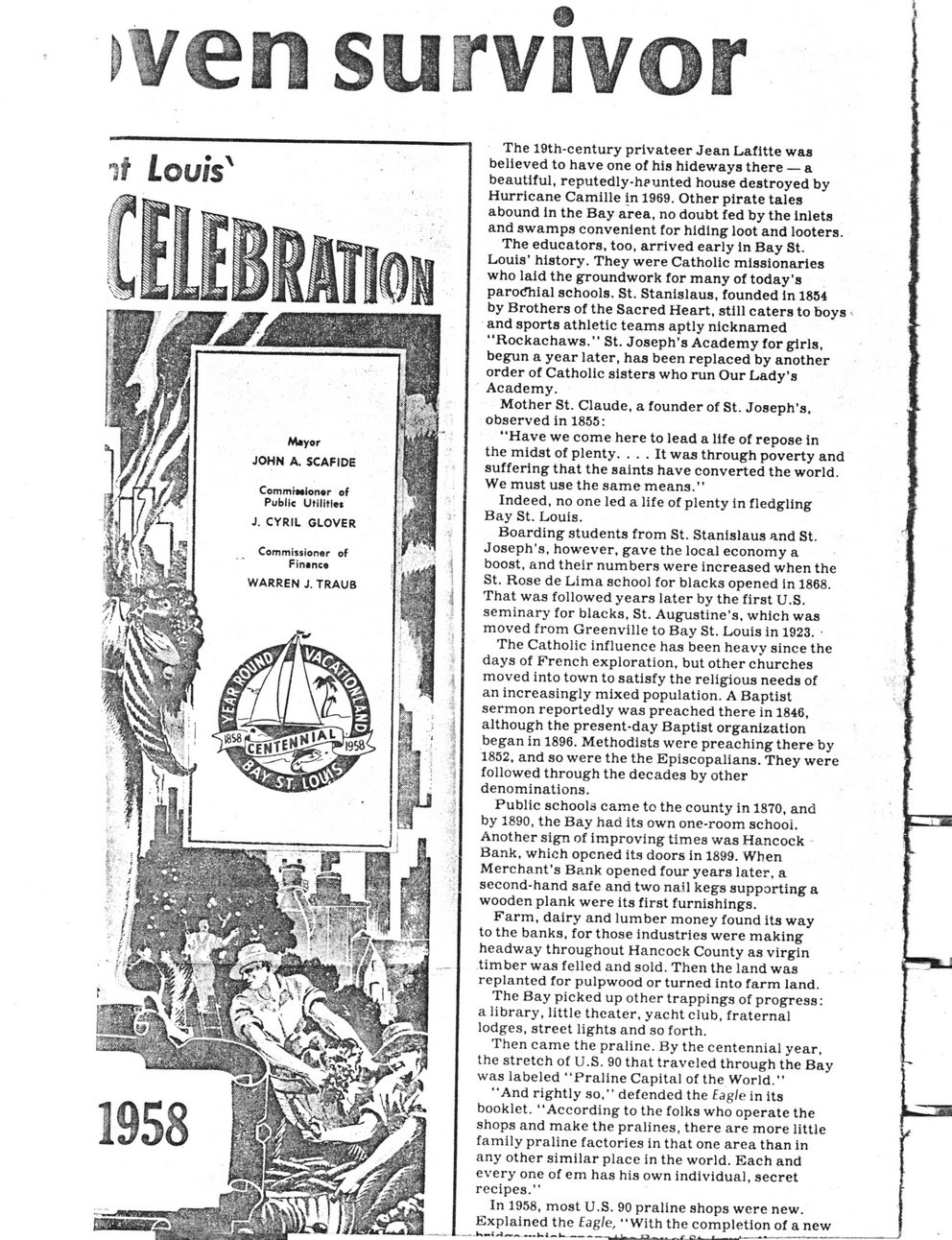This text was obtained via automated optical character recognition.
It has not been edited and may therefore contain several errors.
if Louis' The 19th-century privateer Jean Lafitte was believed to have one of his hideways there — a beautiful, reputedly-hpunted house destroyed by Hurricane Camille in 1969. Other pirate tales abound In the Bay area, no doubt fed by the inlets and swamps convenient for hiding loot and looters. The educators, too, arrived early in Bay St. Louis’ history. They were Catholic missionaries who laid the groundwork for many of today’s parotfhial schools. St. Stanislaus, founded in 1854 by Brothers of the Sacred Heart, still caters to boys * and sports athletic teams aptly nicknamed "Rockachaws.” St. Joseph’s Academy for girls, begun a year later, has been replaced by another order of Catholic sisters who run Our Lady’s Academy. Mother St. Claude, a founder of St. Joseph’s, observed in 1855: “Have we come here to lead a life of repose in the midst of plenty. ... It was through poverty and suffering that the saints have converted the world. We must use the same means.” Indeed, no one led a life of plenty in fledgling Bay St. Louis. Boarding students from St. Stanislaus and St. Joseph’s, however, gave the local economy a boost, and their numbers were increased when the St. Rose de Lima school for blacks opened in 1868. That was followed years later by the first U.S. seminary for blacks, St. Augustine’s, which was moved from Greenville to Bay St. Louis in 1923. • The Catholic influence has been heavy since the days of French exploration, but other churches moved into town to satisfy the religious needs of an increasingly mixed population. A Baptist sermon reportedly was preached there in 1846, although the present-day Baptist organization began in 1896. Methodists were preaching there by 1852, and so were the the Episcopalians. They were followed through the decades by other denominations. Public schools came to the county in 1870, and by 1890, the Bay had its own one-room school. Another sign of improving times was Hancock Bank, which opened its doors in 1899. When Merchant’s Bank opened four years later, a second-hand safe and two nail kegs supporting a wooden plank were its first furnishings. Farm, dairy and lumber money found its way to the banks, for those industries were making headway throughout Hancock County as virgin timber was felled and sold. Then the land was replanted for pulpwood or turned into farm land. The Bay picked up other trappings of progress: a library, little theater, yacht club, fraternal lodges, street lights and so forth. Then came the praline. By the centennial year, the stretch of U.S. 90 that traveled through the Bay was labeled “Praline Capital of the World.” “And rightly so,” defended the Eagle in its booklet. “According to the folks who operate the shops and make the pralines, there are more little family praline factories in that one area than in any other similar place in the world. Each and every one of em has his own individual, secret recipes.” In 1958, most U.S. 90 praline shops were new. Explained the Eagle, “With the completion of a new

BSL Centennial 1958 一Document (052)